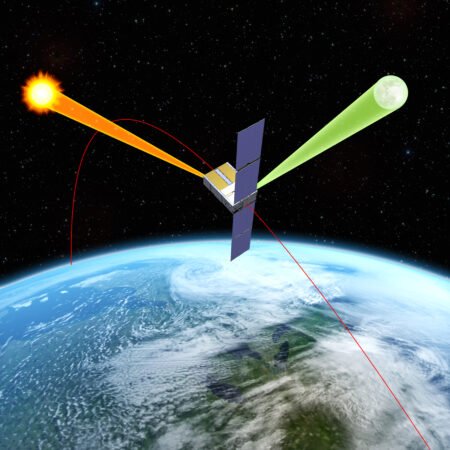Fast Facts
-
Mission Overview: NASA’s Arcstone lunar calibration instrument aims to enhance data quality from Earth-viewing sensors by measuring sunlight reflected from the Moon, launching on June 23, 2025.
-
Calibration Innovation: Arcstone will be the first mission dedicated solely to lunar reflectance measurements from space, establishing a high-accuracy calibration standard for the scientific and commercial space sectors.
-
Technological Advancement: Utilizing a spectrometer, Arcstone seeks to provide stable, atmospheric-free lunar reflectance measurements, thereby improving the precision of Earth observation data.
- Broader Impact: If successful, Arcstone could enable retroactive calibration of past Earth data and support ongoing sensor performance, enhancing environmental monitoring and future predictions.
NASA is set to launch a groundbreaking instrument called Arcstone. This unique device will enhance data quality from Earth-viewing sensors in space. The mission will leverage sunlight reflected from the Moon, a process termed lunar calibration. Such measurements aim to establish a universal standard for the science community and commercial space industries.
Currently, satellites and airborne sensors require calibration against known standards. Arcstone is the first mission solely focused on measuring lunar reflectance from orbit. This innovation promises to boost the accuracy of scientific data gathered from space.
“One of the most challenging tasks in remote sensing from space is achieving the required instrument calibration accuracy on-orbit,” said Constantine Lukashin, principal investigator for Arcstone. The Moon offers a stable source of light for calibration. As Lukashin explains, the reflected light from the Moon provides a high level of detail and precision.
Planned for a six-month mission, Arcstone will utilize a spectrometer. This instrument will analyze light, breaking it into its different wavelengths. After its expected launch in June, Arcstone will reach orbit and begin data collection about three weeks later.
The mission represents a new, cost-effective design and operational method. However, measuring lunar reflectance from Earth can be challenging. Atmospheric interference often complicates these efforts. By positioning Arcstone above the atmosphere, researchers hope to achieve higher precision in measurements.
Currently, a shared calibration standard does not exist in the scientific community. “Dedicated radiometric characterization measurements of the Moon have never been acquired from a space-based platform,” said Thomas Stone, co-investigator for Arcstone. This absence hampers the ability to benchmark datasets against the Moon.
If successful, Arcstone may make the Moon the preferred reference standard for various missions. Decision-makers could even retroactively improve previous Earth data. This capability enhances sensor performance, crucial for instruments that may degrade over time in space.
“Earth observations from space play a critical role in monitoring the environmental health of our planet,” Stone noted. Utilizing lunar calibration offers a reliable method to assess Earth’s condition and predict future trends. With partnerships including universities and research institutions, the Arcstone mission embodies a significant technological advancement.
For further details on the Arcstone mission, visit NASA’s dedicated site.
Continue Your Tech Journey
Stay informed on the revolutionary breakthroughs in Quantum Computing research.
Access comprehensive resources on technology by visiting Wikipedia.
SciV1

